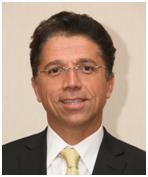时间:2015年7月1日上午11点-12点
地点:教三440 会议室
Label-free Cancer Cell Classification via Time-stretch Imaging with Optical Data Compression
Bahram Jalali
UCLA
A new class of high throughput real-time instruments based on the photonic time-stretch has led to the discovery of optical rogue waves, detection of rare cancer cells, and the highest analog-to-digital conversion performance ever achieved. The time stretch quantitative phase camera is an imaging modality that features continuous operation at about 100 million frames per second and shutter speed of less than a nanosecond. As an imaging flow-through microscope, the technology is in clinical testing for label-free classification of cancer cells in blood. While necessary for detection of rare cancer cells, the high throughput of this camera creates a big data problem. The system produces a large volume of data in a short time equivalent to several 4K movies per second. Such a data fire hose places a burden on data acquisition, storage, and processing operations and calls for technologies that compress images in optical domain and in real-time. Warped (anamorphic) stretch transform is a new optical techniques that performs non-uniform Fourier domain sampling enabling the first demonstration of data compression in optical domain. We also show that emulation of the time stretch in two dimensional space leads to a new class of digital image processing algorithms with application to edge detection.
Biography:
 Prof. Jalali is the Northrop-Grumman Endowed Chair in Optoelectronics and Professor of Electrical Engineering at UCLA with joint appointments in Biomedical Engineering, California NanoSystems Institute (CNSI) and Department of Surgery at the UCLA School of Medicine. He received his Ph.D. in Applied Physics from Columbia University in 1989 and was with Bell Laboratories in Murray Hill, New Jersey until 1992 before joining UCLA. He is a Fellow of IEEE, the Optical Society of America (OSA), the American Physical Society (APS) and SPIE. He is the recipient of the R.W. Wood Prize from Optical Society of America for the invention and demonstration of the first Silicon Laser, the Aron Kressel Award of the IEEE Photonics Society, the IET Achievement Medal, and the Distinguished Engineering Achievement Award from the Engineers Council. In 2005 he was elected into the Scientific American Top 50, and received the BrideGate 20 Award in 2001 for his entrepreneurial accomplishments. During 2001-2004, he was with Intel Corporation’s optical and wireless communication divisions.
Prof. Jalali is the Northrop-Grumman Endowed Chair in Optoelectronics and Professor of Electrical Engineering at UCLA with joint appointments in Biomedical Engineering, California NanoSystems Institute (CNSI) and Department of Surgery at the UCLA School of Medicine. He received his Ph.D. in Applied Physics from Columbia University in 1989 and was with Bell Laboratories in Murray Hill, New Jersey until 1992 before joining UCLA. He is a Fellow of IEEE, the Optical Society of America (OSA), the American Physical Society (APS) and SPIE. He is the recipient of the R.W. Wood Prize from Optical Society of America for the invention and demonstration of the first Silicon Laser, the Aron Kressel Award of the IEEE Photonics Society, the IET Achievement Medal, and the Distinguished Engineering Achievement Award from the Engineers Council. In 2005 he was elected into the Scientific American Top 50, and received the BrideGate 20 Award in 2001 for his entrepreneurial accomplishments. During 2001-2004, he was with Intel Corporation’s optical and wireless communication divisions.






